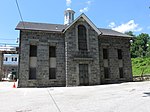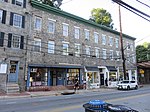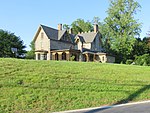Ellicott City, Maryland

Ellicott City is an unincorporated community and census-designated place in, and the county seat of, Howard County, Maryland, United States. Part of the Baltimore metropolitan area, its population was 75,947 at the 2020 census, making it the most populous unincorporated county seat in the country. Ellicott City's historic downtown – the Ellicott City Historic District – lies in the valleys of the Tiber and Patapsco rivers. The historic district includes the Ellicott City Station, which is the oldest surviving train station in the United States, having been built in 1830 as the first terminus of the original B&O Railroad line. The historic district is often called "Historic Ellicott City" or "Old Ellicott City" to distinguish it from the surrounding suburbs that extend south to Columbia and west to West Friendship.
Excerpt from the Wikipedia article Ellicott City, Maryland (License: CC BY-SA 3.0, Authors, Images).Ellicott City, Maryland
Court Avenue,
Geographical coordinates (GPS) Address Nearby Places Show on map
Geographical coordinates (GPS)
| Latitude | Longitude |
|---|---|
| N 39.268055555556 ° | E -76.798888888889 ° |
Address
Court Avenue 8355
21043
Maryland, United States
Open on Google Maps








